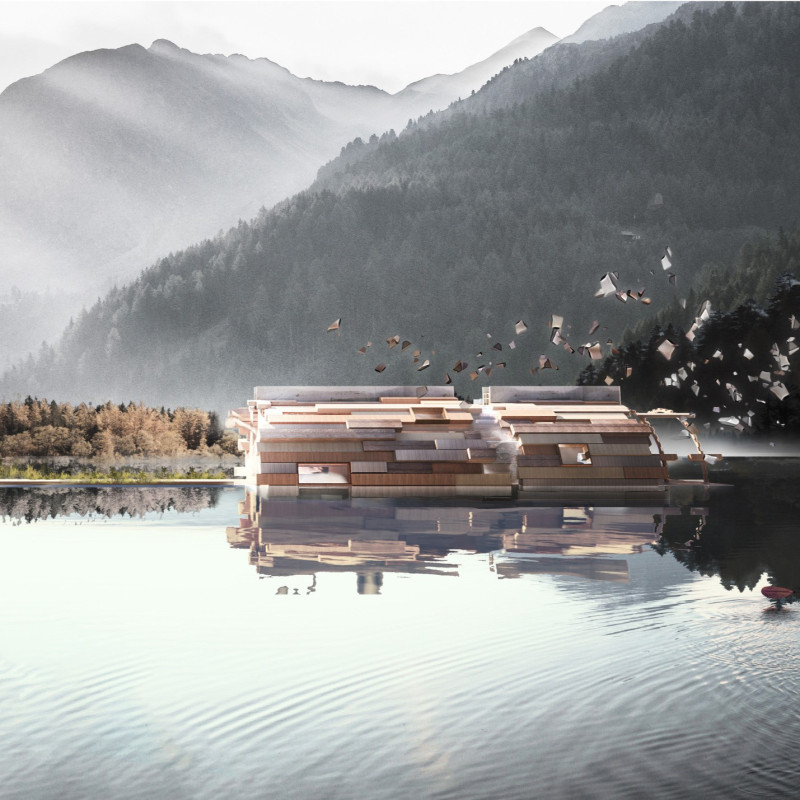5 key facts about this project
The Floating Pavilion is located in Anlong National Mountain Outdoor Sports Park in Dushan Town, Guizhou Province. The design focuses on honoring the traditions of ancient wood merchants, serving both a cultural and functional purpose. Its unique semi-submerged form, inspired by traditional canoes, creates a strong connection with the surrounding landscape and highlights the historical role of water transportation in the wood trade.
Cultural Context
The pavilion reflects the essence of "emission culture," which is tied to the practices of ancient Chinese wood merchants. This profession, known as "Wooden Pai," has historical roots that reach back to the Spring and Autumn Period and the Warring States Period. The design captures the spirit of these merchants, emphasizing themes of resilience and the transient nature of their work.
Architectural Form
The structure features a semi-cylindrical shape that partially floats on the water's surface, mimicking traditional vessels. This design choice reinforces the relationship between the pavilion and its environment, allowing it to fit naturally within the park. The elevation above the water creates a floating effect, encouraging visitors to reflect on both nature and history while interacting with the space.
Material Considerations
While specific materials are not mentioned in the presentation text, there is a clear connection to wood within the design concept. The emphasis on the pavilion's floating quality suggests a thoughtful integration of materials that resonate with the local heritage. This relationship with wood strengthens the project's cultural significance and highlights the importance of materiality in the architectural discourse.
Design Experience
The Floating Pavilion offers visitors a chance to engage with the stories woven into its design. It fosters a deeper understanding of Guizhou's heritage. The relationship between the form and the environment creates a unique spatial experience. The building serves as a cultural landmark and a place for community interaction. The careful shape of the pavilion against the water emphasizes its presence in the landscape, blending history with a modern architectural approach.



















































